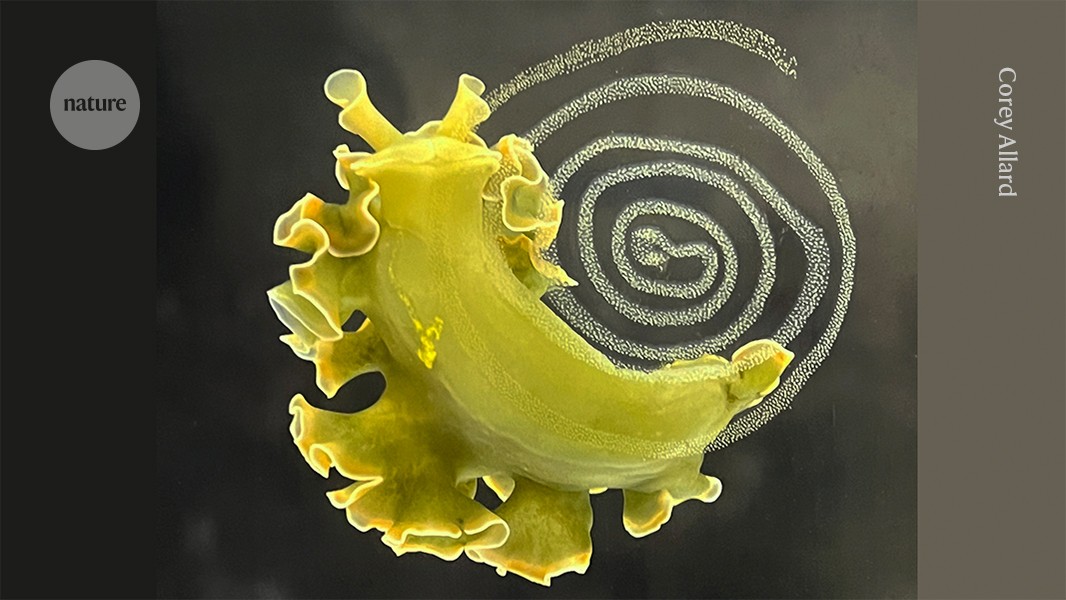‘Wildest thing’: solar-powered slug steals chloroplasts and stores them for emergencies

Marine creatures house contraband structures in special organelles, which the animal raids for food in times of need

Sea slugs in the genus Elysia are bright green because they store chloroplasts, the organelles that make energy in plants. Credit: Corey Allard
‘Solar-powered’ sea slugs have specialized depots in their cells that store photosynthetic equipment looted from algae, a study1 reports. These depots provide just the right chemical environment to keep the stolen apparatus, called chloroplasts, alive and working to turn sunlight into nutrients.
“It was the wildest thing that we had seen,” says study co-author Nicholas Bellono, a biologist at Harvard University in Cambridge, Massachusetts. The authors also found that, in lean times, the slugs can raid these compartments to consume chloroplasts.
The compartment “is basically like a moving refrigerator of chloroplasts where, after a period of starvation, the slugs can switch from storage to consumption to survive”, Bellono says.
The findings were published in Cell.
Green grazer
Scientists discovered decades ago that certain species of sea slugs store chloroplasts from the algae they eat, a diet that can turn the slugs bright green. But no one understood how the slugs keep these foreign organelles alive without the support of the rest of the algal cell.
Bellono and his team added chemical tags to proteins newly made by the slugs’ own cells. They found that most of the proteins in a slug’s chloroplasts were made by the slug — not by the original algae. That meant the slug was helping to maintain the chloroplasts.
When the scientists looked at the chloroplasts under a microscope, they found that the organelles were housed in special compartments in the slugs’ guts. Each compartment was surrounded by a membrane that tested positive for markers typically found in cellular structures called phagosomes, which fuse with other structures called lysomes to digest unneeded organelles. The researchers named this structure the kleptosome, after a Greek word that means to steal.
Life of crime
The team also found that these organelles contained ion channels — receptors that convert chemical messages into electrical signals. Among them is one called P2X4, which opens in response to the presence of ATP, an energy-carrying molecule produced during photosynthesis.
Login or create a free account to read this content
Gain free access to this article, as well as selected content from this journal and more on nature.com
or
Sign in or create an accountdoi: https://doi.org/10.1038/d41586-025-01982-4
This story originally appeared on: Nature - Author:Humberto Basilio


















